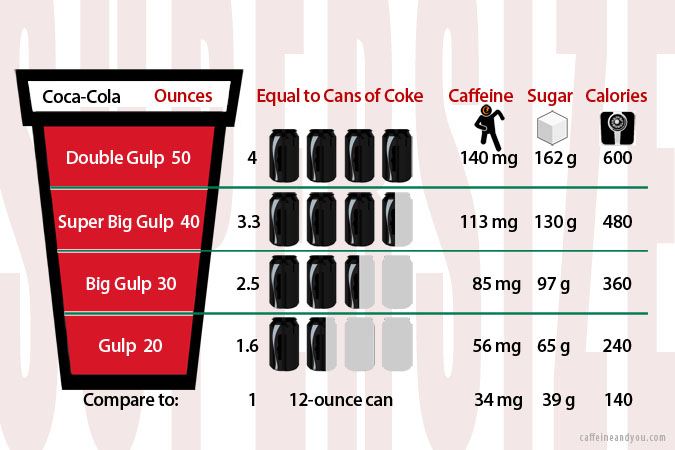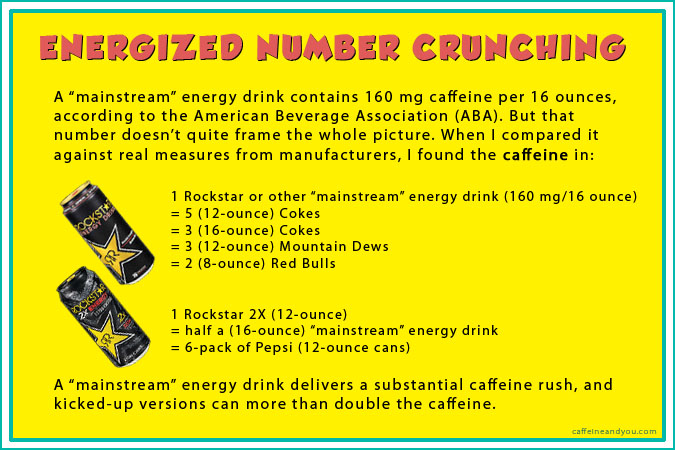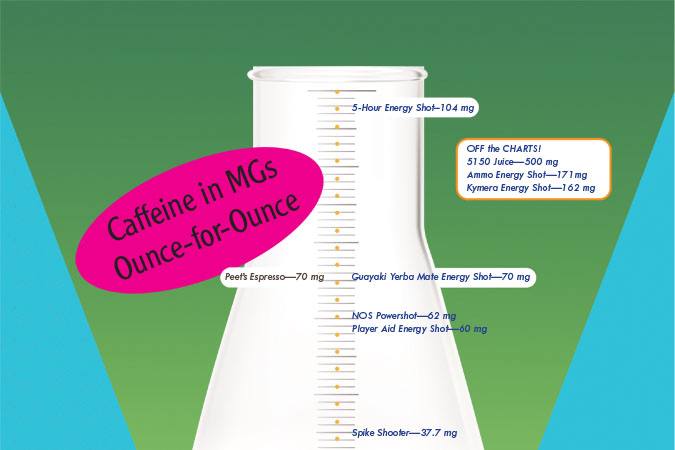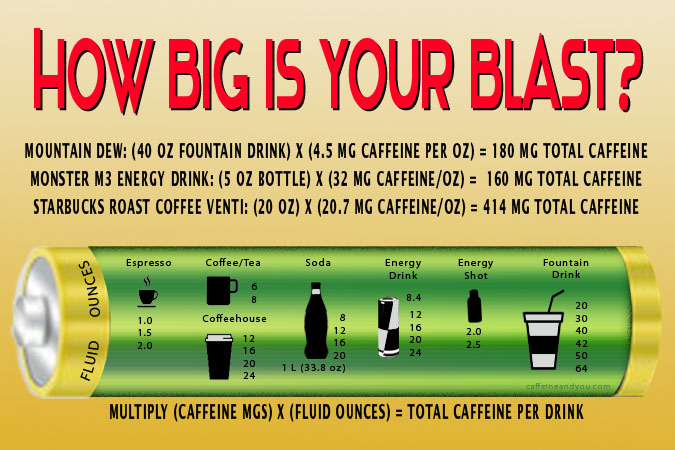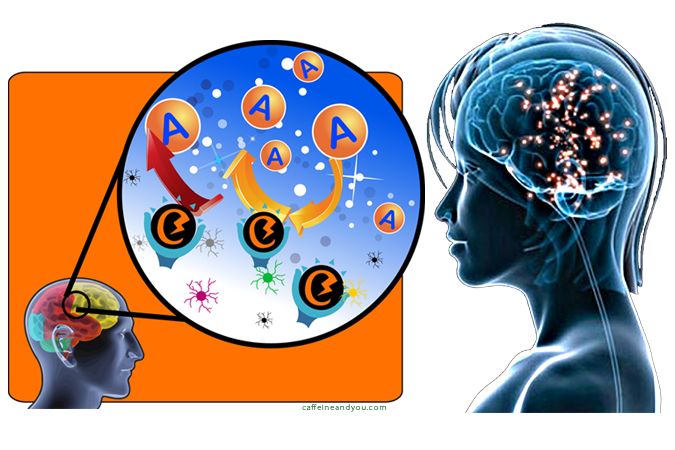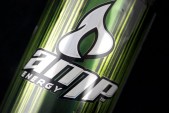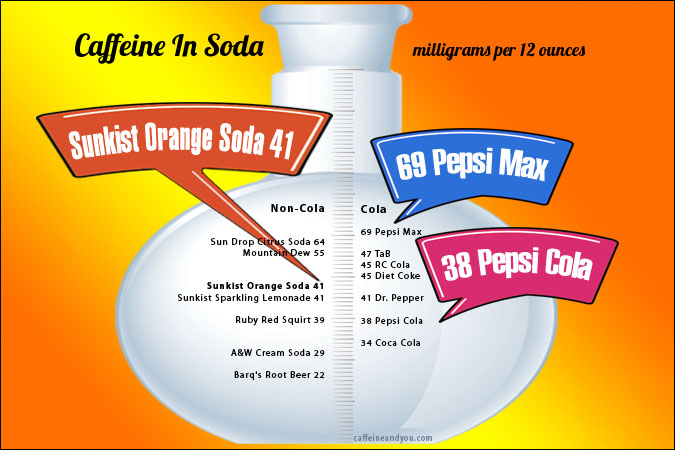
Look closely: Sunkist Orange Soda is even more caffeinated than Pepsi Cola, while Pepsi Max and Sun Drop Citrus Soda zoom to the top of the chart – they’re bubbling close to the FDA’s legal limit for caffeine in soft drinks (71 mg per 12 ounces).
And: Ounce for ounce, Pepsi Max and Sun Drop have twice the kick of Coca-Cola.
How do these numbers compare to coffee? Caffeine in coffee and tea varies, but for this book, the rule of thumb is: an average cup of coffee contains about 100 mg of caffeine, and an average cup of tea contains about 50 mg of caffeine. Starbucks lists their Grande brewed coffee at 340 mg caffeine.
What about the sugar content of caffeinated beverages? The next infographic shows how supersize soft drinks compare in caffeine, sugar, and calories…

